Green Acre #156: Tropical Plants, Meet Tropical Weather!
OH, WHAT HAVE we here? Looks like clusters of blackberries dropped in pots, but the colors are . . . radioactive—are these really found in nature? And do these things grow like this, loose clusters in a heap?
There was a multi-tiered rack of them hidden from sight of the garden center gendarmes so I plucked one flower or berry or what do you call it. It was loose. You know—just asking for it? Then I plucked another, and another, one of each color, surreptitiously shoving them in the deep pockets of my tan shorts (hoping the colors didn’t bleed and stain). I mean, these things were just piled in little pots. How are they growing?
I don’t understand this plant. Is it a succulent? The tag says they’re “desert gems cacti.” What the hell is that? Sounds like a made up name to me.*
Not everyone is me, which is probably a good thing, but I’d really like to know . . .
“Are these tacky?” I asked my baby sister Bonnie, who’s wandering around with me, appalled at what I’m doing.
“Yes,” she said, with a nervous giggle. I see a thought bubble above her head: “You’re stealing!,” it says. I don’t care, I want some.
If one blew off in a storm and landed on the ground and I picked it up and pocketed it, would that be stealing? No! I say—that would be tidying. So this is advance tidying. The afternoon rains are coming, this could happen. But that is neither here nor there.
There are many unidentifiable things at this Home Depot in North Palm Beach Florida, where we’d gone to buy a toilet flipper or flapper but got diverted. Even those plants that are identifiable are strange—enormous or weirdly colored—just not normal. And so cheap. I’m panting. Lemons and limes, hibiscus and cannas, oh my god a huge bird of paradise in bloom for $25. I’ve been wooing mine for years with no sign of flowers.
There are masses of bougainvillea, fiery orange, blazing red, hottest pink. You can buy a 10-foot palm tree for about $150. I think, as I always do, that I should rent a truck, fill it and drive home. Except that I don’t like bridges, or highways, or driving, for that matter.
The flora of Florida amaze me—enormous, glossy, wildly colorful, thriving without the torture required to coax them into straggly growth in Washington—despite our long, hot, sunny, tropical summers.
My sisters live here, the old one (as she’s affectionately known) in an oceanfront apartment that’s bigger than my house; it’s on the 8th floor of a condo on Juno Beach, a tiny town snuggled between Singer Island to the south and Jupiter to the north, about 20 minutes from the posh of Palm Beach.
There are two terraces with glorious views. The one out front is the Prince’s favorite. When you sit here it’s like being on an ocean liner—you hardly see land. If he’s not in the ocean, he’s here watching it.
Or, he’s beachcombing for rocks and shells. “They’re thousands of years old,” he marvels with childlike glee. He always brings home bags full, which I dispose of. Using them for drainage in the bottom of pots.
Unlike most south Florida beach towns, Juno is not overbuilt. There are a handful of condos, some private homes, no hotels, and a lot of beach grass and wild flowering plants. About a mile away is a pier and a public beach. Most of the land between state road A1A and the ocean is too narrow for building, so what’s here now is what will be here—until it’s eventually swallowed by the ocean. This is where we stay when we visit.
I like Florida best in summer. The snowbirds have flown north to their summer homes in Maine or whatnot. Hurricane shutters are closed over their windows. Often enough we are the only people on the beach. The only people on the beach. This is true.
Juno is a prime turtle-nesting area. The mammoth adults, many weighing over 300 pounds, drag themselves in to shore late at night leaving g0uges in the sand that resemble tractor-tire tracks. They dig big holes, lay their eggs, cover them with sand and return to the water. Each morning, turtle guardians (humans) mark off the nests with posts so they won’t be disturbed. Throughout the summer the eggs hatch and the tiny turtles trundle off into the ocean where some of them will survive the big fish that find them extremely tasty.
Isn’t nature amazing?
It’s raining in DC, flooding they say. But except for the usual late afternoon storm, it’s sunny here. We’ve been here a week and I’m very tan.
Before leaving yesterday I went down to the beach with scissors, a baggy and a spoon. I snipped a bit of this, pulled up a bit of that—I have no idea what these things are but they’re irresistible—and scooped up some sand, which I’ll mix with soil when I get the haul home.
At the airport, the TSA agent searched my beat-up leather satchel and pulled out the stuffed baggy. “Ah, beach plants,” she said, and gently tucked them back between my flip-flops. “Have a good flight.”
—Stephanie Cavanaugh
LittleBird “Stephanie Gardens” finds fascinating flora wherever she travels.
* Desert Gems, I discover on the Internet, are a ridiculously colorful variety of cactus from Mexico, which seems obvious once you give in to believing they’re real. They’d appear totally natural surrounded by sombreros and piñatas, lit by a sunset and washed down with tequila shots.
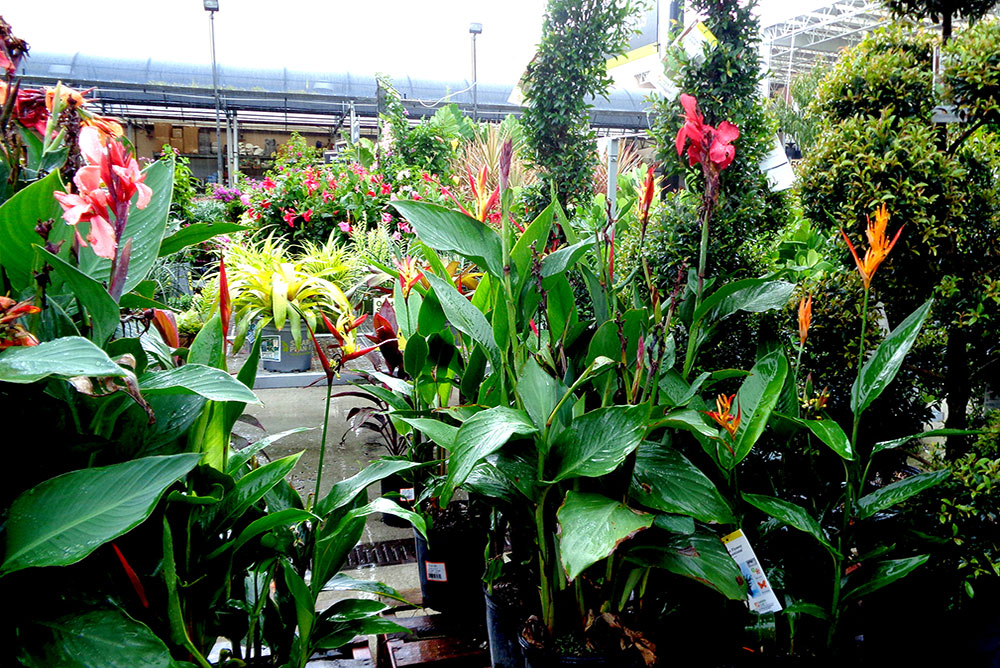
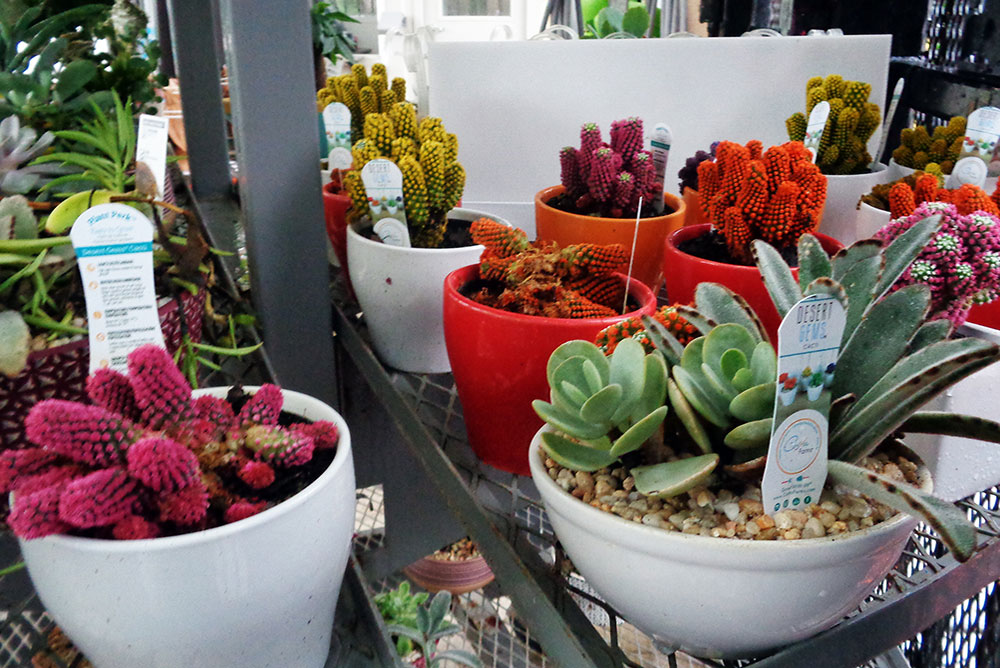
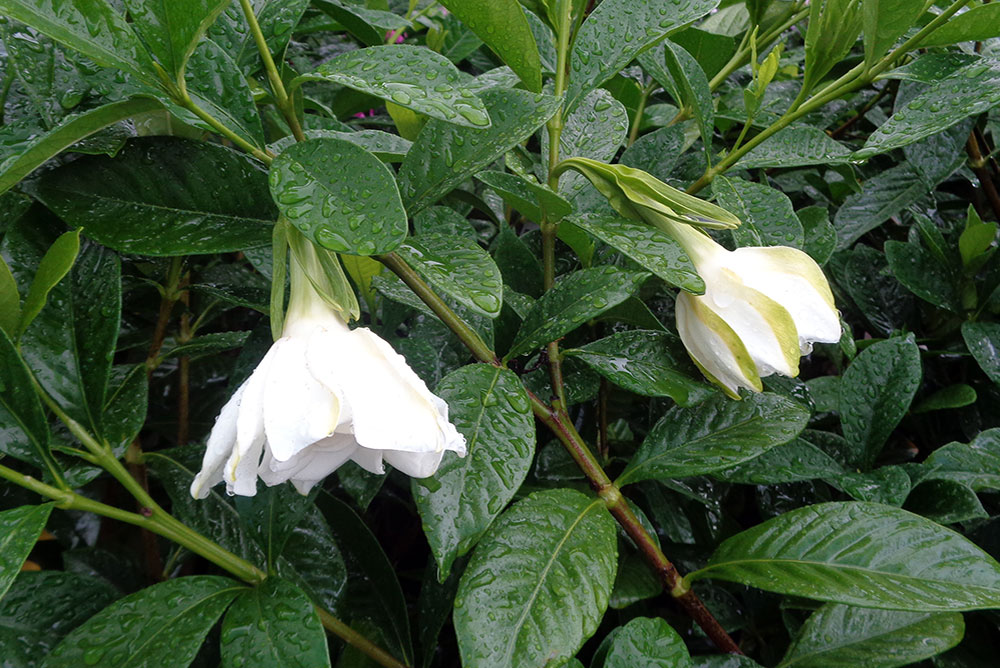
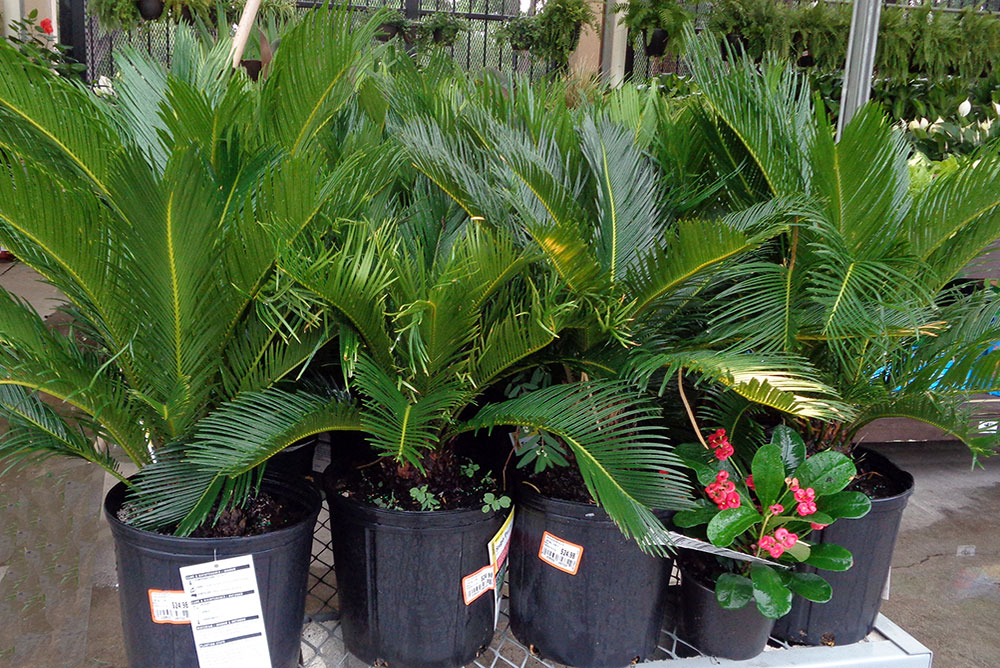
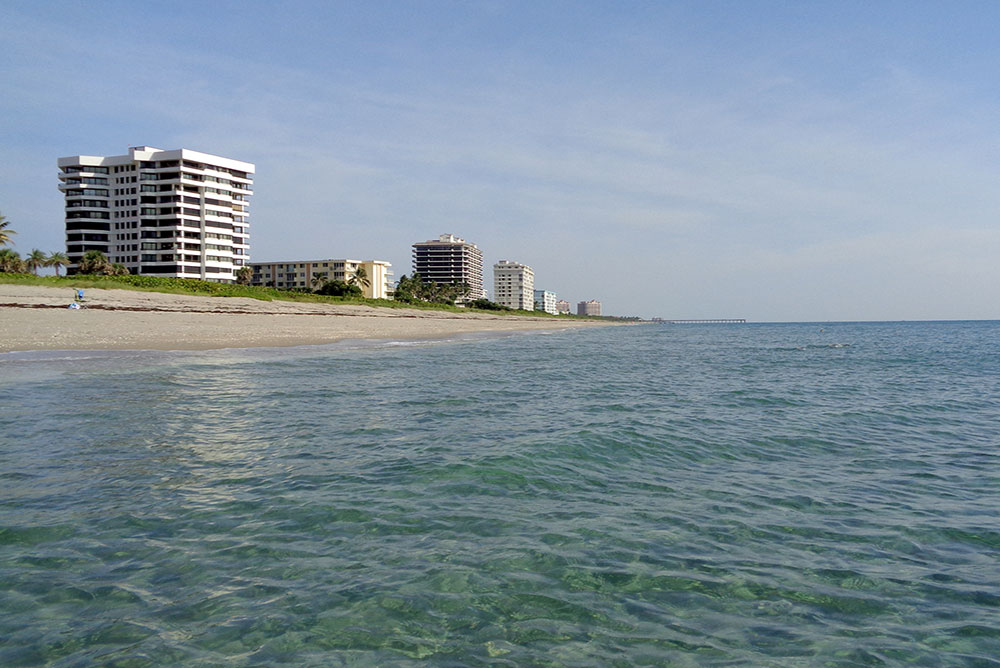

Pinching, I think is a better term as the tiny cacti pieces WERE sort of loose. Wondering what, if anything, will survive in DC. So glad the TSA lady let you carry on with your pinched plants!